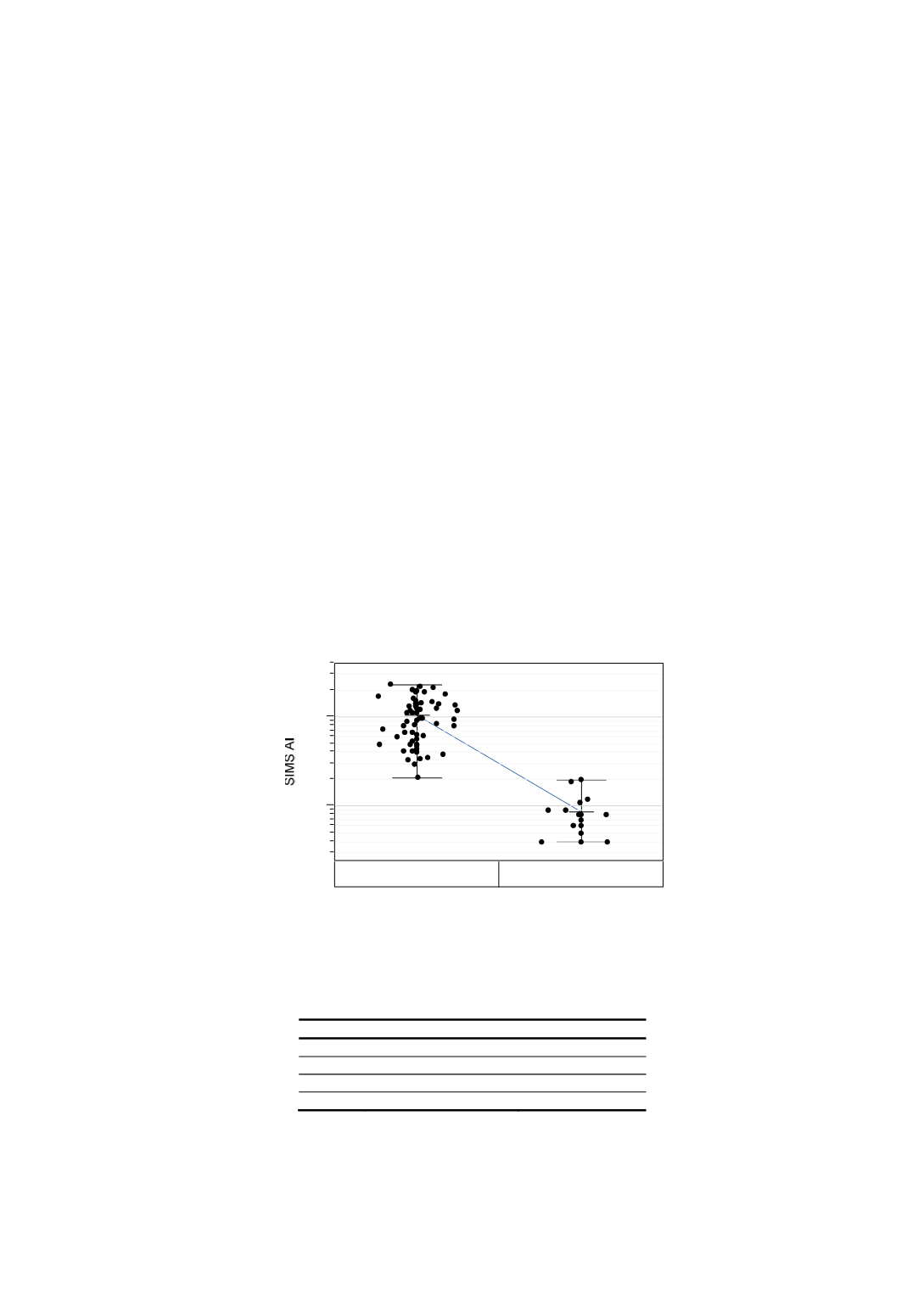

Figure 3:
B- and P- removal factors with (R&D) and without purification of the eutectic
(POR) from ICP-OES measurements. To compare both processes the data points were
normalized by the median of the input MG-Si. Data are grouped into MG-Si (input), SP
(Single Pass in Al-Si), DP (Double Pass) and TP (Triple Pass).
The data show that after three passes in a solvent growth refinement 96.6% of the Boron
and 95.5% of the Phosphorus of the input MG-Si are removed. The removal of all other
impurities (e.g. transition metals) during the solvent growth happens simultaneously and
at a much higher removal rate than B and P. According to the actual specification Silicor
guarantees B
0.3ppmwt and P
0.74ppmwt. With the purification and recycling of
eutectics a significant reduction of these values is expected.
Developments on Al removal and final material quality
As already mentioned before, the solvent growth refining removes all impurities except
aluminum and the final removal of aluminum is most essential and takes place in a
directional solidification. This process step was engineered to be carried out with large
quantities in simple molds and is assisted by pure liquid glass-flux on top of the silicon
melt [2]. In Figure 4 SIMS measurements of the final Al content in finished good is
compared for directional solidification with and without the use of a glass-flux. Using the
flux allows a control of the Al at levels equal and below 0.2ppmwt which is a
concentration that doesn’t degrade the performance of a solar cell made from the material
[4].
Figure 4:
SIMS measurements of the final Al content in finished good is compared for
directional solidification with and without the use of a glass-flux.
Table 1 presents some ICPMS measurements on transition metals in finished good solar
grade silicon from Silicor’s purification process.
Table 1:
ICP-MS measurements of transition metals
Element Concen-tration [ppba]
N Purity
Ti
3.091
>8N
Cr
0.025
>10N
Fe
1.664
>8N
Ni
1.133
>8N
$ QR IOX[
% IOX[
12


















